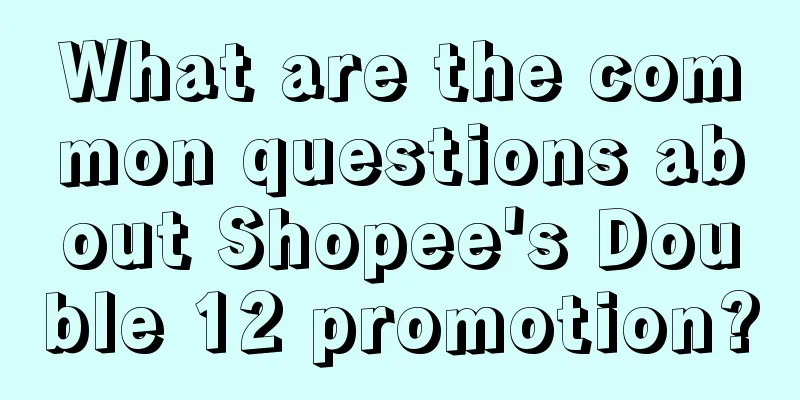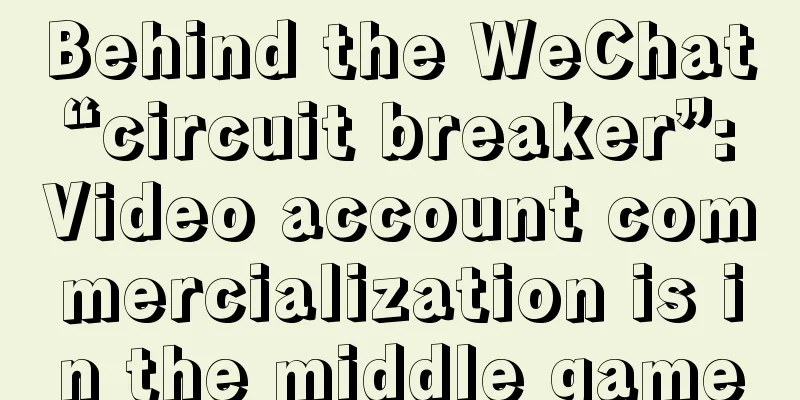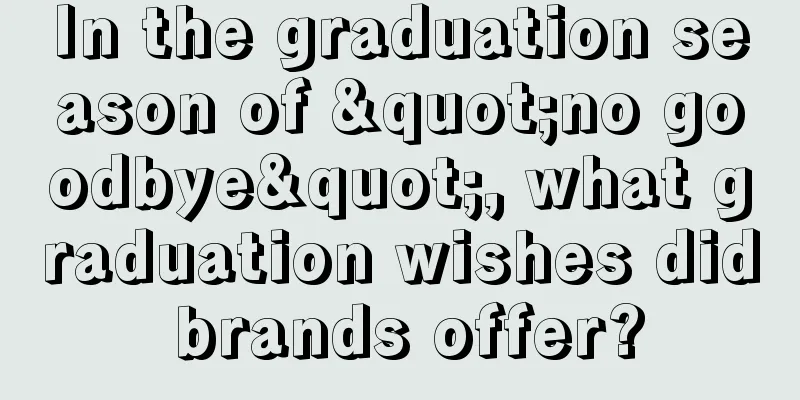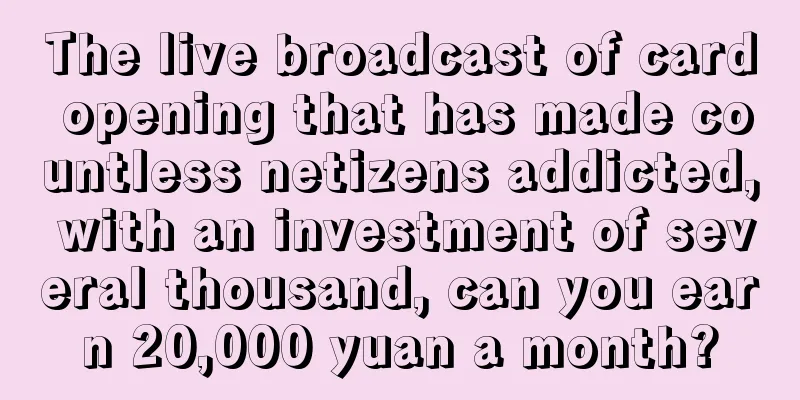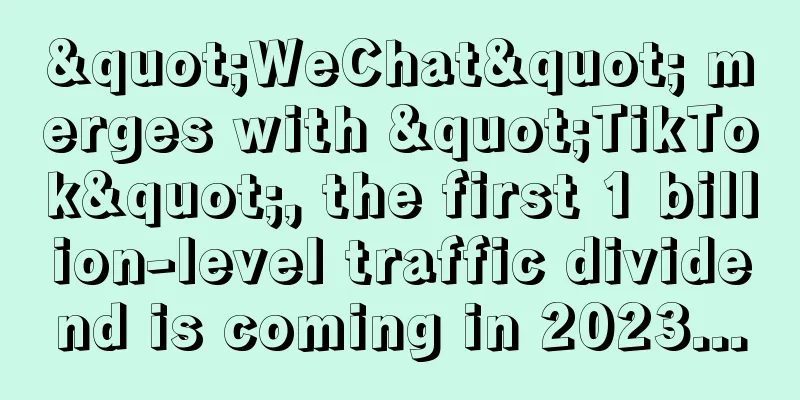What kind of PR response do users need?
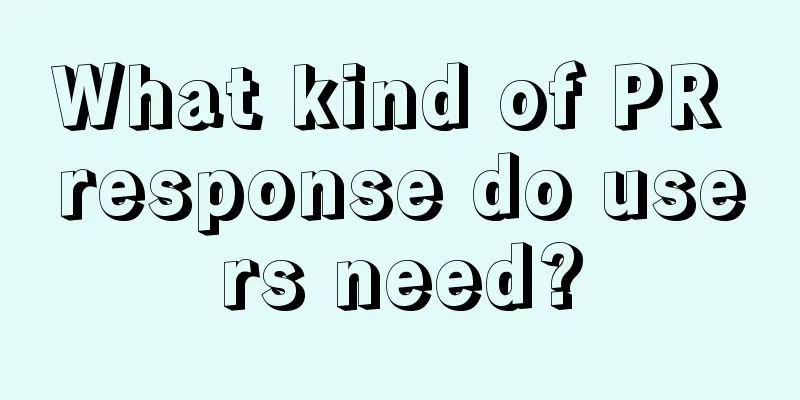
A Chinese cosmetics brand’s apology became a hot topic. Why? The reason is that after the incident of the top anchor who brought goods, the brand was rumored to be a Japanese brand, and it was said that the brand would give the anchor a commission of up to 60%-80%, which is untrue. The company also clarified before that someone had spread rumors and slandered it, and the brand had the right to take legal measures to protect its reputation. Yesterday's public response seemed to want to make a break, but it did not meet expectations, and instead made jokes, which made people confused. Some netizens said that the team's anxiety could be seen in the statement, and it was not sincere and decisive enough. Others believe that a true apology should be concise and to the point, and emphasizing that it is a domestic product in a large amount of space is more like a self-promotion. In addition, the phrase "occupying too many public resources" is mentioned. Literally, it seems that the excessive attention paid by the public to this matter has led to a waste of some resources. This statement is difficult to resonate with the public. Some people also hold the opposite position. I think the crisis gives brands an opportunity to reflect, better understand consumers, and then optimize products and services, which is also a kind of growth. But from my personal point of view, there are indeed problems with the response. For example, the boundaries are blurred. I know that you have made great efforts, but I don’t know what you want to express specifically. This also makes me wonder, what is the intrinsic value and role of an effective public relations apology? 01To answer this question, we must start with why. Why declare? First, because they made mistakes, they need to take responsibility for their actions and repair the damage caused by external problems; Secondly, consumers are the cornerstone of brand survival and development. Issuing statements in a timely manner can respect consumer feelings and help deepen satisfaction. Furthermore, it can help brands avoid or reduce potential legal risks; of course, admitting mistakes in public, explaining the reasons, and providing corrective measures can not only win understanding, but also demonstrate core values. Finally, the statement is an opportunity for internal learning, helping teams and brands to reflect on themselves, optimize those unexpected crises, and lay the foundation for the future. Therefore, the intrinsic value and role of a statement can be briefly summarized as: repairing the image, rebuilding trust, alleviating negative public opinion, demonstrating responsibility and transparency, promoting communication, legal considerations, and maintaining team morale. However, a statement cannot be made by simply following a template. You have to be like a water balance master, accurately controlling every drop of water to ensure that it does not go astray. What does this mean? You have to understand your audience. Find out who is dissatisfied with you and who supports you. Brands face more than one audience. They include media, consumers, long-term KOLs, upstream and downstream suppliers, etc. Consumers care about product quality, media care about news value, and suppliers care about the sustainability of cooperation. If you don't understand them, you can't know what everyone really thinks. If you don't appease one, you lose everything. What to do after you have the target audience? Identify the core problem. This kind of scenario is like a quarrel between a mother-in-law and a daughter-in-law. The mother-in-law complained: This thing is too expensive; the daughter-in-law said, it’s too expensive, how can it be expensive, I have been using it for so many years, it’s the same price, and the effect is very good; the father-in-law said, I haven’t used it, and your aunt also said it’s expensive. Look, what should I do? The mother-in-law cares about the family’s economic situation and saving expenses, while the daughter-in-law pays more attention to product quality and experience, whether to buy it or not; to calm the dispute, you have to be a peacemaker and listen to the real needs. Listening, not only to listen to what is said, but also to deeply feel the emotions, understand everyone, and why they are angry. It is the root cause of a certain situation, hidden under the surface, but it is the driving force for the development of things. What is the key to the struggle between the mother-in-law and the daughter-in-law, it has been put on the surface: "expensive". Is it only expensive? No, there are two conflicts hidden behind it. First, information conflict is closely related to each person's culture, background, and personal cognition. The age gap between the mother-in-law and the daughter-in-law means that there are differences in their growth environment, education, and values, which can easily lead to different views on certain things. Secondly, price conflicts are related to personal perception of the value of items. If the mother-in-law thinks that an item is not worth the price, but the daughter-in-law thinks it is worth the money, it will be difficult for both parties to reach a consensus. What should we do? Should we sit down, reason calmly, and try to argue out a result? No. Because in most cases, arguing cannot solve the problem, but instead aggravates the conflict. The real solution lies in communication and understanding. Communication is to accept the other party's views and feelings, find common ground, and come up with solutions; there are differences on the issue of "expensive", but they are all related to the welfare and happiness of the family. From this perspective, both parties can find a more appropriate solution. So, as a middleman, how should you solve it? Appease your wife, I will make money next time and give it to you quietly, but there is a condition, mom is an old woman, you see, can you argue with her, he who knows the times is a hero; tell the old mother that your wife thinks you are right and will not buy it, isn't it a consensus. From the perspective of a certain domestic brand, the logic is similar. Reduce the price to satisfy those consumers who buy frequently. If it is really necessary, you can launch an "entry-level model" to make those who want to take advantage feel the benefits. This can also give consumers who have not tried it yet a good reputation. 02Obviously, the core of public relations is tacit knowledge, which corresponds to explicit knowledge. This concept was proposed by Michael Polanyi. What's the meaning? Tacit knowledge is a kind of knowledge that is difficult to convey in words, is empirical, and acquired through practice. It is acquired through practice, imitation, observation, and participation, and is difficult to impart directly through text or teaching methods. Just like: our intuition and sixth sense can often help you make accurate judgments, but it is difficult to explain in words why such decisions are made; explicit knowledge is knowledge that can be clearly expressed, recorded and disseminated, such as the content of books, manuals, tutorials or databases. If someone gives you drawings and patents, can you build a machine? If the coach tells you the movements, can you swim? Just having a public relations response template can do public relations well? That's not the case. Tacit knowledge in public relations responses includes how to handle emergencies, how to deal with people of different personalities and backgrounds, and how to adjust communication language according to specific cultures and situations. ...The "macro and fixed-focus lens" of public relations is difficult to express with words or numbers, and it cannot be solved by reading a book or copying it. It requires deep insight and keen analysis of the views of various people in the interest chain. Every sentence must actively imply a certain specific situation. In the face of major issues, simple saliva replies often lead to the failure of strategies and may even have a counterproductive effect. Therefore, when facing the reputation building (public response) of various roles such as the media, consumers, supply chain, partners, etc., it is childish to want to play some witty words right away. It is like: a child gets a complicated Lego toy, just seeing the cool photo on the cover, and thinks "I know it, it's easy", but the result is often a complete failure. Because hastily and casually ignoring the wisdom of the design behind each small component is disrespectful to the designer and irresponsible for every detail of the Lego toy. After all, every component and structure has its unique meaning and function. Any missing or wrong splicing may lead to the failure of the overall work. Similarly, responding to every step and every decision should be based on careful consideration and in-depth understanding of the market; ignoring details, blindly imitating or making hasty decisions is a disrespect for the public relations profession and industry, a disrespect for consumers, and irresponsibility for the brand image. In recent years, I have seen many companies fail because they don’t know how to "respond", making the original small things bigger and bigger. For example: the ice cream incident at a certain auto show was originally a simple apology, but the apology letter described the "worship of foreigners" as "caring for employees." What's more, two young employees were pushed out as scapegoats; later, in the face of everyone's anger, they apologized again, hoping that everyone would forgive them. This approach is really confusing. Of course, we cannot completely blame "PR". In fact, every statement is the result of a consensus reached after internal consultation within the company. The PR team only provides several options for the final decision maker; therefore, the degree to which the decision maker attaches importance to the response is equivalent to the recognition of reputation and brand image. 03So, what kind of response will be recognized by the public? Many people would say sincere, timely, clear, and responsible. That's right. But I prefer to analyze from the perspective of the interest chain; in short, we need to clarify who and what is involved in this matter. Take a domestic cosmetics as an example: the focus is mainly on consumers, media, and KOLs. This means that any response should focus on the three types of concerns and doubts, and provide accurate and targeted answers and action plans. The media pursues news value and social impact. Therefore, it is crucial for brands to present their attitudes, positions, and subsequent action plans; people want to know whether brands are aware of the indirect problems, how serious they are, and what measures they have taken. When responding, a clear, direct, and unevasive attitude is most likely to receive positive media coverage. The Pang Donglai incident is one of the best examples. The sincere and people-oriented response won praise from the media. Consumers are the ultimate users of brands and care about product prices and brand responsibility. When disputes arise, they want to know whether the brand has really listened to everyone's voice and how to improve. Opinion leaders (top influencers) are both the source of the incident and important partners of the brand; after an incident occurs, in-depth communication with them is an essential step. When responding publicly, in addition to considering their own position, brands should also pay attention to their partnership with KOLs to ensure that their responses are "substantial and respectable." In order to maintain a harmonious relationship among the three parties, brands must ensure that each cooperation is based on mutual satisfaction and respect, so as to avoid embarrassment to fans, KOLs or the brand itself. Is it difficult to respond? It is difficult. The skills and details behind the "water balance" are unexpected. Many seemingly simple things in life contain rich connotations and knowledge, not to mention that in today's fierce commercial competition, we are still balancing water on an uneven road. 04So, how to apologize? What? Are you teaching me how to do things? I dare not. But I want to share with you an interesting conversation between a couple that I saw on TikTok some time ago. The content is roughly like this: The wife keeps asking her husband, "Are you wrong? What's wrong? Why is it wrong? How to change it?" After thinking it through, she expresses it in complete and sincere language. I think it's quite interesting and should be useful in PR responses. Why? First of all, the public and consumers need to know clearly whether the brand recognizes its mistakes. This is the first step to building trust. Even if you are hurt by mistake, you should think about why it happened. Secondly, point out what went wrong and explain why it happened. This step is to demonstrate brand transparency and accountability. Then, indicate what steps were taken to correct it. Finally, integrate these elements into a complete and sincere response that expresses true apology and determination; such a response may win public understanding and help rebuild trust and connection with consumers. Do you need to mention vision and values in the response? In my opinion, it is not necessary to mention the two. After all, it strengthens the brand impression and long-term commitment. In the following two specific scenarios, it can be a powerful strategic tool. 1. Direct conflictWhen a company that has always emphasized environmental protection is suddenly exposed to polluting the environment, it should emphasize its environmental commitment and core values in its response. Direct conflict usually refers to when multiple behaviors, views or interests are obviously inconsistent or contradictory. This conflict often occurs between companies upstream and downstream of the supply chain. For example, a company that specializes in producing imaging components may cooperate with Xiaomi, and also have business dealings with Huawei, Apple, etc. These partnerships may not be a problem if viewed separately, but when they exist at the same time, they are likely to cause certain conflicts of interest; therefore, such conflicts are especially common among companies, especially when competing for resources and distributing benefits. To be honest, I don’t understand the logic of a certain Chinese cosmetics brand. The box is so luxurious and looks high-end, but the product inside is actually so small. But the problem is that true high-end should not only be reflected in the packaging, but also in the product service and consumer satisfaction, which is obviously inconsistent with the values and vision. 2. Moral stanceWhen a company or brand publicly expresses its position, especially on controversial and sensitive issues, the core values and corporate culture are often involved in such decisions. Remember the incident in March 2021 caused by a British fashion brand for supporting human rights and environmental protection issues upstream of the cotton supply chain? Their official website banned the use of Xinjiang cotton, claiming that there was "forced labor" in Xinjiang, which later caused various celebrities to terminate their cooperation. In such incidents, brands may believe that they are fulfilling their social responsibilities and protecting human rights and the environment; but when decisions are made without full understanding of the facts or certain cultural or social contexts, consumers may feel that the brand has misunderstood or biased their own culture. Therefore, morality emphasizes the awareness of the overall situation, and has the genes of faith and education; it is the recognition of principles and norms. The choice of which side to stand on or which point of view to hold is a decision made by the company after careful consideration. Vision and values cannot be used as chips for response. They are the core of the brand and are deeply rooted in its DNA. It is easy to belittle yourself by taking it out. By the way, you may say that I am teaching you skills; in fact, I want to tell you that there is a lot of tacit knowledge in PR response. When these linear knowledge are brought out again, it means that we really need to think about whether we really understand their needs and expectations in today's consumer-oriented world. In summary: The only one who can save you is yourself. Previously, I watched a public training video on crisis management given by Mark Suster, a partner of venture capital firm GRP Partners, to startups. The first piece of advice he gave was, "If you don't explain things clearly yourself, someone else will help you explain them, and then the problem will become more complicated." Author: Wang Zhiyuan, WeChat public account: Wang Zhiyuan |
>>: When you have an idea, you write it.
Recommend
Recent observations: Fancy ways to pay for knowledge
Through the author's personal experience and o...
How to get more search traffic for public account articles? 丨Search Optimization Tutorial 01
This article is mainly aimed at creators of WeChat...
Is there a limit on RMB settlement? How to break the limit?
In the tide of globalized economy, RMB settlement,...
Rapidly break out of the circle on Xiaohongshu: Maximizing celebrity marketing
How to quickly break through the circle on Xiaohon...
What products can’t be advertised on Amazon? What advertising methods does Amazon have?
Amazon is one of the world's largest online re...
In-depth|Born to be competitive, Mengniu sports marketing has reached the next level
Mengniu Group and director Zhang Yimou's team ...
What types of promotions does Shopee have? What are the characteristics of the platform?
Shopee merchants can promote sales to boost buyers...
With a total of 100,000 private domain users in one year and a repurchase rate of 38%, how does Daily Black Chocolate conduct private domain operations?
How can brands do a good job in private domain ope...
How to develop Douyin e-commerce growth strategy from 0 to 1
Growth products, as the core of corporate strategy...
How to create an account on Shopbop? What discount information is there?
There are many cross-border e-commerce platforms n...
Building a data operation system: from a “data machine” to a “growth engine”
In the digital age, data operations have become a ...
The container of content is larger than the content itself
1. I used to write for public accounts, and later ...
Do I need to purchase goods to copy sell on Amazon?
For sellers who want to sell products on Amazon, a...
Live streaming was blocked, millions of fans were lost... A "big brawl" among the top live streaming hosts, is it time for a reshuffle in the industry?
There is no shortage of topics in the live streami...
Wufangzhai, a “marketing genius” among traditional brands
How did Wufangzhai transform from the king of zong...
